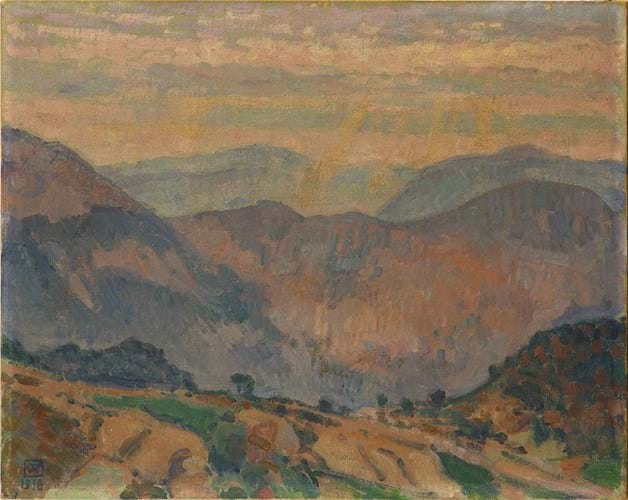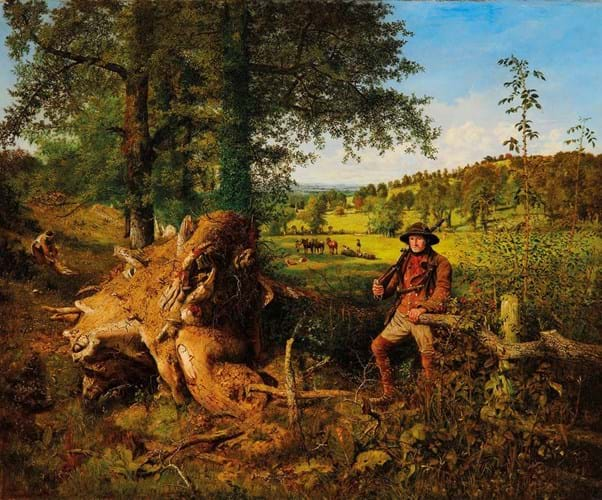The physical constraints caused by the pandemic may have made it more challenging for salerooms to source goods and put on live events, but a large number are reporting more interest than this time last year – not least in the fine art sector.
But it would be folly to think that it is all plain sailing in the auction world.
While internet bidding has provided a rich outlet, a sale still needs to offer a variety of fresh, attractive and well-priced works to do well. Those hard yards that need to be run to gain those important consignments are more testing than ever.
After the recent sale of British & European Fine Art at Chiswick Auctions (25% buyer’s premium), head of paintings and fine art Adrian Biddell pointed to the legwork put in over the preceding months as key in securing a decent spread of lots.
“We worked hard on this sale over the summer and our efforts paid off,” he said. “Much of the sale came fresh to the market from private collections and estates.”
The August 27 auction generated a hammer total of £248,000 against a low estimate of £120,000 with 84 of the 97 lots sold (87%).
Reasonable pitches
By offering a range of reasonably pitched material as well as a handful of important individual highlights, a total of 160 bidders registered for the sale and, of the 59 successful buyers, 32 were new to the firm.
“I have rarely known this level of pre-sale interest… especially in August which is usually in the doldrums,” said Biddell.
As well as some spirited bidding from UK bidders, international buyers bought a third of the lots with interest coming from Europe, Australia, Israel, South Africa and the US.
Biddell spoke of “pent-up demand brought on by the constraints of the times in which we are all living”.
Chiswick’s head of sale, Luke Price, added: “I have rarely seen a sale like it, and never in this particular category. To approach a 90% selling rate for a various owners’ sale in this field is almost unprecedented… It sends a strong message to the marketplace.”
Explorer’s grandson
While a drawing by Gustav Klimt (1862-1918) drew keen interest and sold above estimate to a phone bidder for £32,000 (see News, ATG No 2457), a good response also came for a group of works consigned from the grandson of Baron Adrien de Gerlache de Gomery.
The Belgian explorer’s expedition to Antarctica in 1897 got stuck in the ice a full 15 years before Shackleton suffered the same fate in Endurance.
All five lots from this source sold for a total of £27,200 against a combined pre-sale low estimate of £12,000. The leading light was a mountain view by the highly sought-after Post-Impressionist Théo Van Rysselberghe (1862-1926).
The 12¾ x 16in (32 x 41cm) oil on canvas was signed with the artist’s monogram and had been acquired by de Gomery directly from the artist in 1920, two years after Van Rysselberghe had painted it in the summer of 1918 in the mountain village of Peïra-Cava in the Alpes- Maritimes, north of Nice.
The area depicted was developing as a resort for ‘sports d’hiver’ at the time and was already attracting a star-studded list of visitors, including impresarios, actors and artists who were often keen to keep away from the masses on the Côte d’Azur. It boasted at least three hotels by the end of the First World War.
While Van Rysselberghe’s larger and earlier works can make huge prices, particularly his important pointillist works from around the turn of the 20th century which often feature either figures or water (you can add an extra ‘0’ for those), this was a much later and technically simpler landscape.
Even so, it was a fluid work with a tonal quality that still had significant appeal, especially against an estimate of £10,000-15,000. It drew bidding from different countries before it sold for £18,000 to a Belgian buyer.
Rabbi reading
Another work by a European artist bringing interest was a portrait of a rabbi reading by the French- Ukrainian painter Emmanuel Mané-Katz (1894-1962). It came from a private London collection and was estimated at £12,000-18,000.
The 2ft 5in x 2ft (74 x 61cm) signed oil on canvas had been acquired by the vendor’s family in 1985.
The loose brushstrokes and rich palette, not to mention its subject matter, made it a trademark work. The artist, who was born into an orthodox Jewish family in Kremenchug, Ukraine, and later studied at the École des Beaux-Arts after moving to Paris in 1913, painted many Jewish subjects including rabbis, musicians and ceremonies.
Works by Mané-Katz appear regularly on the market and prices have reached six figures on occasion. The example at Chiswick sold to a private London collector at £20,000, a decent sum for the artist and above average for a rabbi portrait. It was also the highest price for Mané-Katz at auction so far this year (source: Artprice by Artmarket).
Logging landscape
One of the British pictures bringing strong competition was an intriguing painting of a gamekeeper in a landscape. It came from a private London vendor whose grandfather, the Birmingham artist Harold William Smith (1895-1984), had acquired it in the late 1930s.
Although in the past Logging in a country vail had been loosely attributed to Richard Redgrave (1804-88), the Victorian landscape and genre painter (and noted administrator), the auctioneers thought George William Mote (1832- 1909) was a more likely candidate due to compositional elements as well as the intense fascination with the vegetation. It was catalogued as a fully attributed work but estimated at a relatively cautious £2000-3000.
Works by Mote, a self-taught artist who initially worked as gardener to the eccentric antiquary Sir Thomas Phillips of Middle Hall in Worcestershire, are not particularly common on the market. When they do appear, they tend to be scenic landscapes that sell for £5000 or under.
However, a countryside scene with a strong narrative element, The Garden of England, from 1865, sold at Christie’s in December 2013 for £14,000 – a result that still holds the auction record for Mote.
The current picture, despite its apparently pleasant bucolic subject, also had such an interesting sub-plot as, on close inspection, it contained a number of visual metaphors that may relate to a hidden meaning.
While the main figure, the gamekeeper, is portrayed with forthright honesty, a poacher to the left of the middle-ground steals a trapped hare while, further in the distance, loggers have felled a numbered tree trunk that they are preparing to drag away, perhaps for use in the royal shipyards. Dominating the foreground meanwhile is a fallen oak showing signs of infestation, canker and disease.
Whether or not it carried an underlying social or political message, the work, a 2ft 1in x 2ft 6in (63 x 77 cm) oil on canvas, had strong appeal in any case due to the artist’s detailed technique and clear appreciation of nature, as well as its rarity.
After good interest emerged at the sale, it was finally knocked down at £11,000 to the London trade, the second-highest price at auction for Mote and demonstrating again how decent works with reasonable estimates are bringing good demand in spite of the current blight affecting our own times.

















